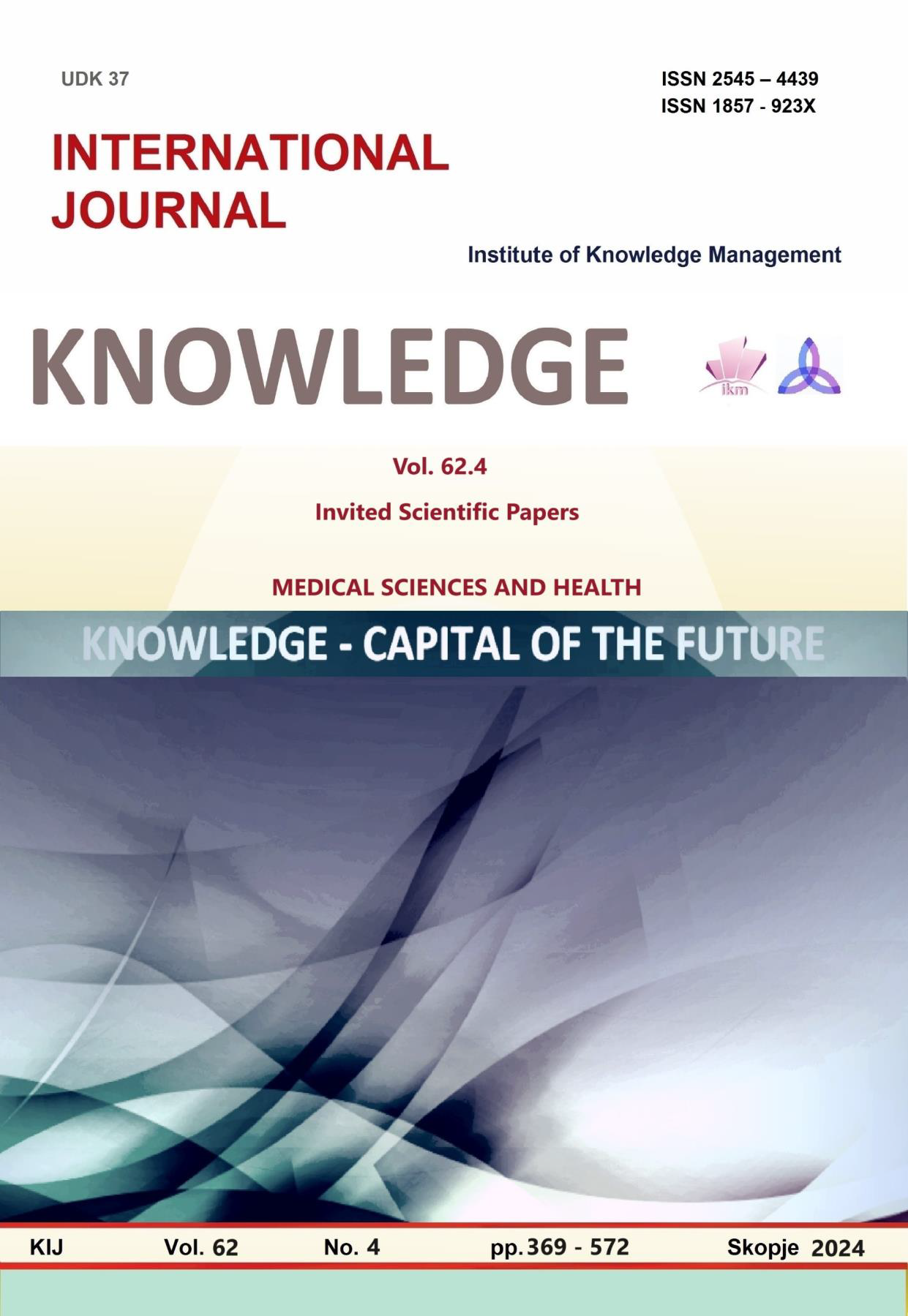ТЕОРЕТСКИ ОСНОВИ ЗА ПРИМЕНА НА КРАНИОСАКРАЛНАТА ТЕРАПИЈА КАЈ НАЈЧЕСТИ ПРОБЛЕМИ ВО ЦЕРВИКАЛНИОТ ДЕЛ
THEORETICAL BASIS FOR THE APPLICATION OF CRANIOSACRAL THERAPY IN THE MOST COMMON PROBLEMS IN THE CERVICAL PART
Author(s): Danche Vasileva, Dejan GjorgjievskiSubject(s): Health and medicine and law
Published by: Scientific Institute of Management and Knowledge
Keywords: craniosacral therapy;theoretical bases;therapeutic techniques;cervical part;cervical dysfunctions
Summary/Abstract: Cervical pain and dysfunction, and accompanying signs and symptoms are very common nowadays, primarily due to the increased use of information technology (computers, tablets and phones) and the more frequent sedentary type of work. The causes of pain, dysfunction and limited mobility in the cervical part are various and multifactorial, but the common thing is that it is a very common occurrence, affects the quality of life, represents a burden on the individual and society, leads to reduced work ability and loss of productivity in people. Of particular concern is the higher prevalence of this problem and its appearance from school age among young people, all the way to old age. Due to the increasing volume of occurrence, its prevalence, the problems, consequences and complications arising from this problem, I decided to elaborate on this topic. The biomechanical characteristics of the cervical part of the spine are due to the mechanical and kinematic characteristics of the vertebrae, intervertebral discs, ligaments, muscles and nerve elements, which as structural building elements are an integral part of the neck. Different pathological conditions are etiological factors that are a direct or indirect cause of generating cervical pain, dysfunction and limited range of motion. Craniosacral therapy is a gentle, non-invasive, holistic and integrative manual therapy technique, which is an integral part of osteopathy, and as a therapeutic approach it aims to establish integration between the structural and functional parts of the nervous system, but also of the whole organism. The basic principles on which this technique is based are based on the theory that limitations and restrictions in the mobility of the cranial sutures, the vertebral dura and the spinal column have a negative impact on the creation and propagation of the craniosacral rhythm. This rhythm spreads as rhythmic impulses from the cerebrospinal fluid through the skull and spinal column to the sacrococcygeal complex. All these structures that are in direct or indirect contact with the cerebrospinal fluid are part of the cranio-sacral system and are potentially affected and related to it. The technique itself pays special attention to the upper cervical mechanism and thus a direct impact is expected to improve the condition, functionality and mobility in this particularly important segment of the cervical part. Many different problems and pathological conditions that are of a musculoskeletal, traumatic, neurological, but often also of an emotional or psychological nature, affect the craniosacral system and are a potential cause of the already mentioned limitations and restrictions. Craniosacral therapy uses a unique system and way to treat these limitations and restrictions. Craniosacral therapists, through the techniques that are an integral part of craniosacral therapy, use mild and gentle pressure on the external structures, which are an integral part of this system, the skull, the spine and the sacro-coccygeal complex, with the aim of therapeutic benefit for patients with various pathological conditions, including musculoskeletal problems, trauma, neuritis, neuralgia and the like. The most commonly used protocol is the 10-step protocol, which was set up by John Upledger, and its application requires adequate education and experience. Conclusion: Fundamentally today craniosacral therapy is widely accepted and applied by many craniosacral therapists, osteopaths, chiropractors, manual therapists, doctors and physical therapists. Some of the problems and ailments pass quickly, while some subside gradually and need more time, and for old and chronic problems, a greater number of treatments is required. The number of treatments, as well as the reactivity of the treatment itself, is strictly individual and depends on the patient's age, cause and severity of the problem. It is important to note that craniosacral therapy is a therapeutic approach without the use of drugs and is without side effects.
Journal: Knowledge - International Journal
- Issue Year: 62/2024
- Issue No: 4
- Page Range: 483-489
- Page Count: 7
- Language: Macedonian

